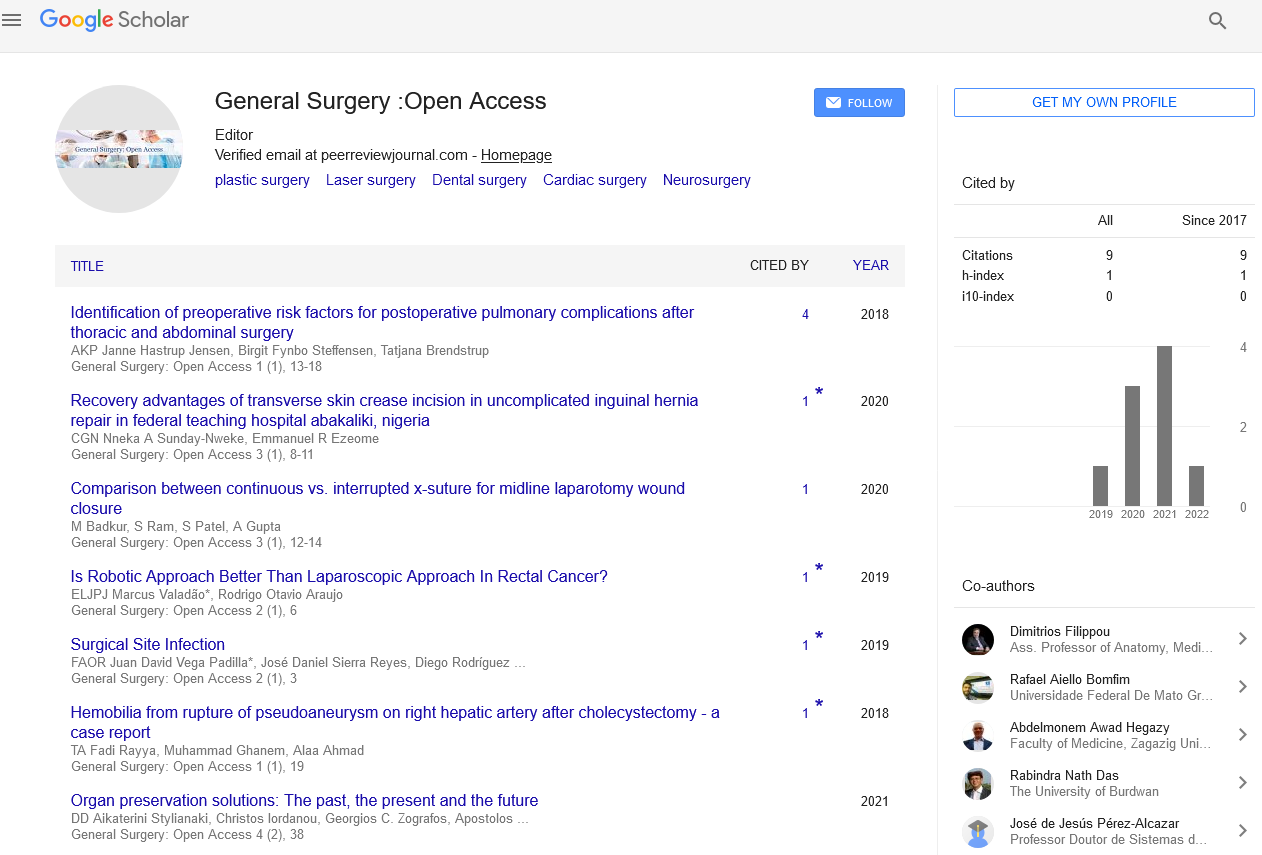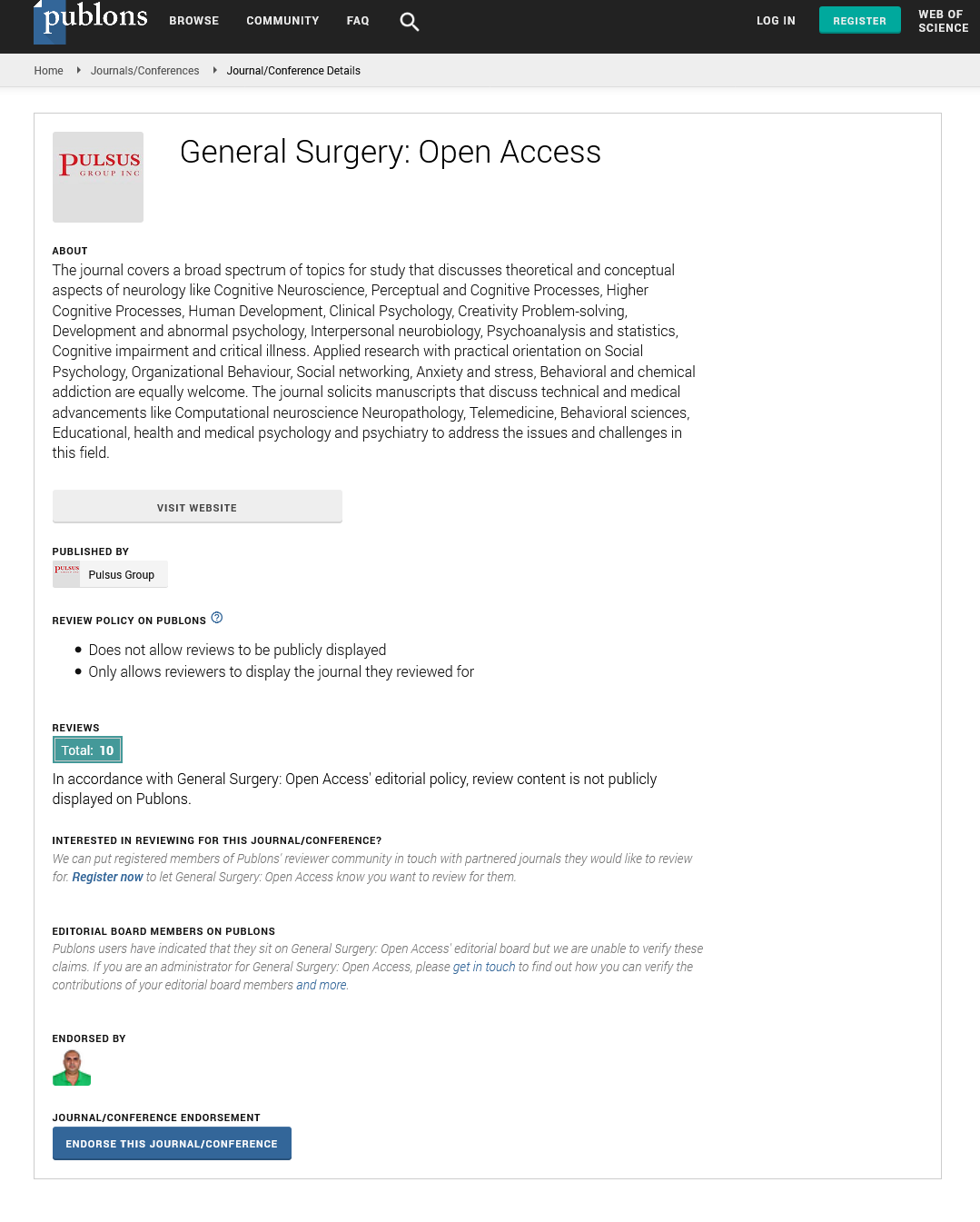Surgical Site Infection
2 Fundación Universitaria, Juan N Corpas, Bogotá, Colombia, Email: ddavids89@hotmail.com
3 Fundación Universitaria, San Martin, Bogotá, Colombia, Email: ddavids89@hotmail.com
4 Universidad Nacional de Colombia, Bogotá, Colombia, Email: ddavids89@hotmail.com
5 Fundación Universitaria de Ciencias de la Salud (FUCS), Bogotá, Colombia, Email: ddavids89@hotmail.com
6 Universidad de Ciencias Aplicadas y Ambientales (UDCA), Bogotá, Colombia, Email: ddavids89@hotmail.com
7 Fundación Universitaria, Sanitas, Bogotá, Colombia, Email: ddavids89@hotmail.com
This open-access article is distributed under the terms of the Creative Commons Attribution Non-Commercial License (CC BY-NC) (http://creativecommons.org/licenses/by-nc/4.0/), which permits reuse, distribution and reproduction of the article, provided that the original work is properly cited and the reuse is restricted to noncommercial purposes. For commercial reuse, contact reprints@pulsus.com
Abstract
Objective: To perform a narrative review about operative site infection and its prevention. Methodology: Non-systematic review of the literature. Results: Surgical site infection is the second most common type of health care–associated infection and increases hospital morbidity and mortality. It is defined as the infection that affects the surgical incision area or its deep tissue in the first 30 days after surgery and when a prosthesis or implant is used, this time extends up to one year. The most common pathogen in surgical site infections is Staphylococcus aureus. Its prevention depends on hospital and pre-hospital interventions (MRSA screening, smoking cessation, bowel preparations, glucose control, skin preparation, antibiotic prophylaxis, among others). Conclusion: The prevention of surgical site infection is an important objective in health care.






